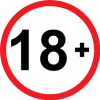Horse racing has a long history in the UK, and for those new to the sport, the variety of terms and betting options can seem overwhelming at first.
This blog post aims to simplify the process by explaining the fundamentals—from how betting works and how to read a racecard, to understanding odds and the most common bet types.
It also explores the differences between betting online and at the racecourse, helping newcomers make informed choices.
Read on to learn more.
What Is Horse Racing Betting?
Horse racing betting involves placing a stake on a particular outcome in a race, most commonly on a horse to win or to finish in one of the placed positions. The potential return depends on both the odds at the time the bet is placed and the amount staked.
Bets are typically made before the race begins, and the payout is usually determined either by the odds secured at the time of placing the bet or by the official starting price, depending on the bookmaker’s terms and the type of bet selected.
Bettors can choose to place bets in person at the racecourse or online through licensed bookmakers. If you choose to play a bet, it’s important to only stake money you can afford to lose and to keep a clear record of your betting activity.
How Do Horse Racing Odds Work?
Horse racing odds represent the potential return on a given stake and are most commonly shown in fractional or decimal formats. Fractional odds, such as 5/1, indicate that a £1 stake would return £5 in profit, plus the original £1 stake if the bet is successful. In contrast, decimal odds include the stake in the total return, so odds of 6.0 would return £6 for every £1 staked, which includes £5 in winnings and the £1 stake.
Even-money bets—written as 1/1 in fractional or 2.0 in decimal form—mean that the winnings match the amount staked.
Odds reflect the perceived likelihood of a horse’s chances in a race based on current market information. Shorter odds, such as 2/1 or 3.0, typically indicate a stronger favourite, while longer odds suggest an outcome seen as less probable. These prices can shift as more information becomes available or as money is placed on particular runners.
Bettors can choose to take the odds available at the time of placing the bet or opt for the Starting Price (SP), which is set just before the race begins.
Once you have a clear understanding of how odds work, the next step is deciding how to approach betting on the race, if you’re interested in doing so.
See Our Top-Rated Online Casinos
Find the best online casino bonuses, read reviews from real players & discover brand new casinos with our list of recommended sites
Popular Types of Horse Racing Bets Explained
Win, Place, and Each-Way Bets
A Win bet requires the selected horse to finish first in order to receive a return.
A Place bet offers a payout if the selection finishes in one of the qualifying positions. The number of places paid varies depending on the race type, the number of runners, and the bookmaker’s terms, so it’s important for bettors to check the specific place terms before placing a bet.
An Each-Way bet combines both a win and a place bet. It is essentially two bets: one on the horse to win, and another on the same horse to place. If the horse wins, both parts of the bet pay out—the win at full odds, and the place at a fraction of the odds. If the horse only places, only the place part of the bet returns a payout.
As place terms can vary by race and bookmaker, you might want to review them carefully beforehand if you’re considering placing this type of bet.
Forecast and Tricast Bets
A Forecast bet involves predicting the first two horses to finish a race in the exact order.
A Tricast bet takes this a step further, requiring bettors to correctly predict the first three finishers in the correct sequence. As these bets are more challenging to land, winning returns are less frequent. For this reason, many bettors choose to keep stakes relatively modest.
Some variations of these bet types allow for multiple combinations, such as covering different finishing orders, which increases the total stake but improves the chances of a return. However, the core principle remains the same: selecting the top finishers in the correct order.
Accumulator Bets
An Accumulator combines multiple selections from different races into a single bet. For the accumulator to return a payout, every selection included must win. The winnings from each successful leg are rolled over and used as the stake for the next, allowing for potentially large returns from relatively small stakes.
However, if even one selection loses, the entire bet is settled as a loss. Because of the increased risk and the number of outcomes that need to go in a bettor’s favour, accumulators are often placed with modest stakes.
Regardless of the type of bet you might place, the information available on a racecard can be a useful tool in assessing the runners before placing a bet.
How to Read a Racecard?
A racecard brings together key information about a race and its runners, helping you compare horses more easily before deciding whether to place a bet. Typically, it includes the race time, distance, going (ground conditions), and detailed information about each runner—all in one place.
Each horse is usually listed with a number, name, age, trainer, and jockey. You’ll typically also see recent form figures, usually shown as a string of numbers that represent finishing positions in previous races. Letters are sometimes included to indicate specific outcomes—F often stands for fell, while P means pulled up.
The racecard usually also displays the weight each horse is set to carry and its official rating—a numerical guide to a horse’s assessed ability compared to others in the field. In handicap races, this rating can help determine how much weight a horse will carry. Some racecards also flag whether a horse has previously won at the same course (C), over the same distance (D), or both (CD).
Other useful details may include the draw number in flat races, any headgear being worn (such as blinkers or cheekpieces), and comments on past performances. By putting all these elements together, you can build a clearer picture of how each horse matches up with the race conditions.
This understanding naturally leads into the key factors many consider before placing a bet.
Key Factors to Consider Before Placing a Bet
If you choose to place a bet, there are a few key factors that many people consider when assessing a horse’s chances and the odds being offered:
- Form: A look at recent performances may be useful, especially if the horse has run in similar conditions or at the same level of competition.
- Going: The condition of the ground, such as good, soft or heavy, can have a noticeable effect. Some horses are better suited to certain types of going.
- Trainer and jockey: The recent performance of a trainer or jockey, along with any notable records at the course, can add further context.
- Distance: Some horses are better suited to specific distances, so it might help to check whether the horse has run well over the same trip before.
- Draw: In flat racing, the starting stall position can have an impact depending on the course layout and ground conditions.
- Betting odds: Odds reflect how a horse is currently viewed in the market, based on available information and betting activity.
That said, every race carries a degree of unpredictability—that’s part of what makes the sport entertaining. While this information can help you make more informed decisions, it can’t guarantee any outcomes. If you choose to get involved, setting a budget for the day and sticking to it can help keep the experience enjoyable throughout.
With these basics in place, the next step is deciding how and where to place your bets.
Should You Bet Online or at the Racecourse?
If you decide to place a bet, both online and on-course options are available, each offering a distinct experience.
Betting online makes it straightforward to compare odds from different bookmakers. Online accounts often include features like deposit limits and activity summaries, which help keep track of stakes placed. Mobile apps also allow you to follow the markets from anywhere, even when not at the racecourse.
Betting at the racecourse offers a more traditional approach. Bettors can see the horses in the parade ring, check the going for themselves, and place bets in person with on-course bookmakers or at betting windows. Many enjoy the atmosphere of a live meeting and the opportunity to see how the runners look on race day.
Whichever option is chosen, it is important to use licensed bookmakers and keep track of spending. Understanding how odds work, being familiar with the main bet types, and knowing how to read a racecard can all help approach horse racing betting with a clear understanding and plan.



